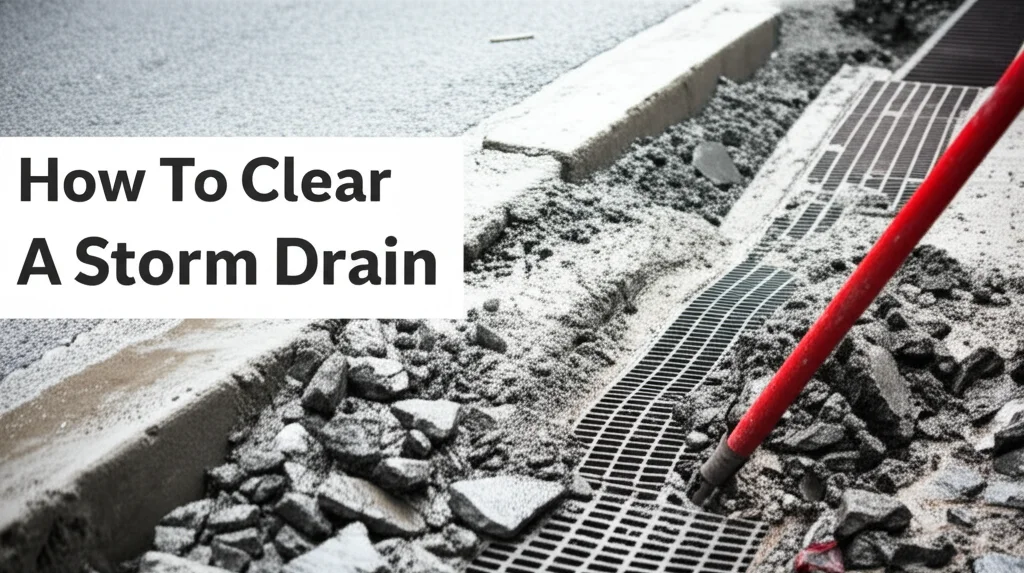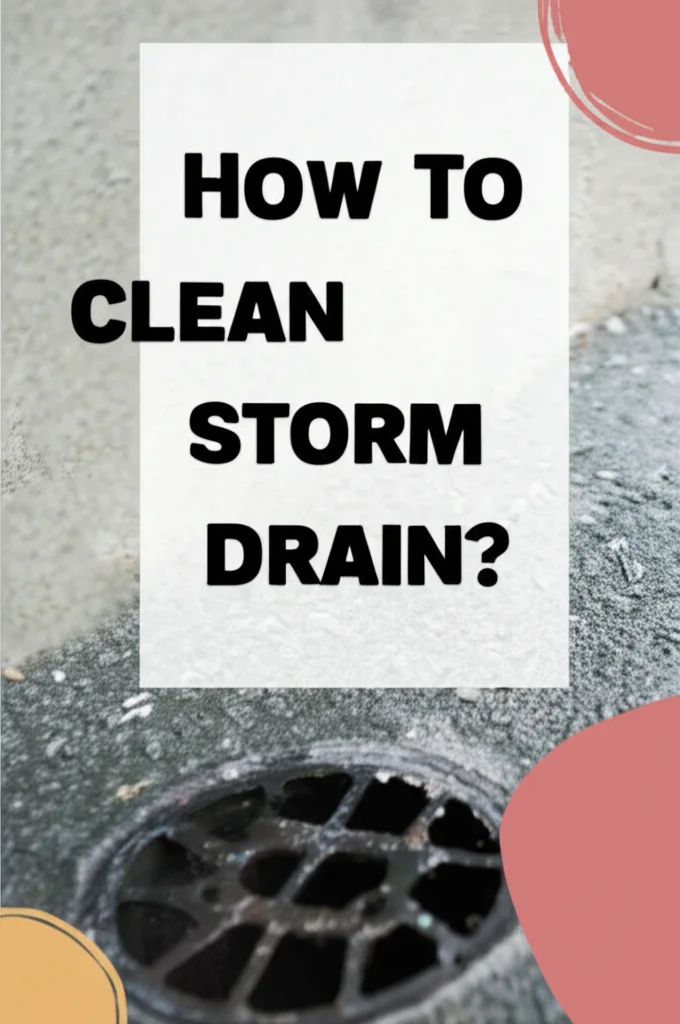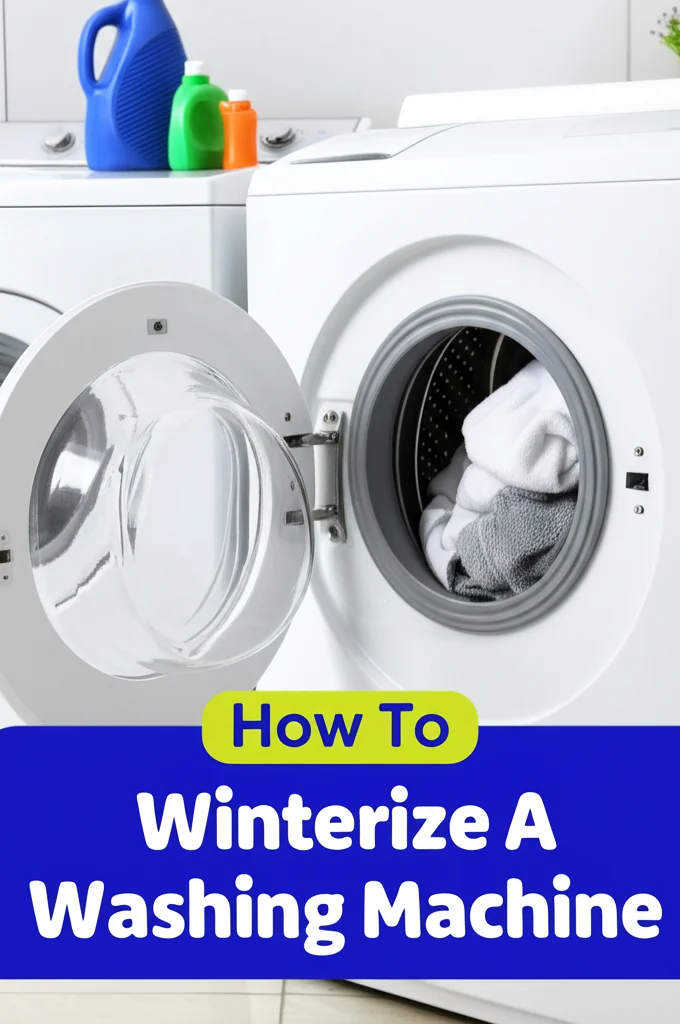· Home Maintenance · 7 min read
How To Clear A Storm Drain

How To Clear A Storm Drain: A Step-by-Step Guide
Have you noticed water pooling around your street after a rainstorm? A clogged storm drain is often the culprit. Clearing a storm drain isn’t just about convenience; it’s about preventing potential flooding and protecting your property. This article will walk you through how to safely and effectively clear a storm drain, keeping your neighborhood safe and dry. We’ll cover everything from the tools you’ll need to the precautions you should take, ensuring you can tackle this task with confidence.
Takeaway:
- Regularly inspect storm drains near your property.
- Remove debris like leaves, branches, and trash.
- Use appropriate tools for safe and effective clearing.
- Prioritize safety by wearing gloves and eye protection.
Quick Answer:
To clear a storm drain, carefully remove the grate, pull out visible debris by hand (wearing gloves!), and use tools like a rake or shovel to dislodge deeper blockages. Always prioritize safety and avoid entering the drain.
Why Storm Drains Clog and the Importance of Clearing Them
Storm drains are designed to channel rainwater away from streets and properties, preventing flooding. However, they frequently become clogged with debris like leaves, branches, plastic bottles, and even sediment. This buildup restricts water flow, leading to localized flooding, which can damage property and create hazardous conditions. Regularly clearing storm drains is a proactive step towards protecting your community.
Ignoring a clogged storm drain can lead to more significant problems. Standing water can attract mosquitoes, creating a public health concern. Furthermore, prolonged flooding can erode foundations and damage landscaping. Taking a few minutes to clear a drain can save you and your neighbors from costly repairs and potential health risks.
Tools You’ll Need to Clear a Storm Drain
Before you start, gather the necessary tools to make the job easier and safer. Having the right equipment will streamline the process and minimize the risk of injury. Here’s a list of essential items:
- Work Gloves: Protect your hands from sharp objects and bacteria.
- Safety Glasses: Shield your eyes from debris and splashing water.
- Heavy-Duty Rake or Shovel: For removing larger debris from the drain opening.
- Garden Hose with Spray Nozzle: To flush out remaining debris.
- Bucket: To collect the removed debris.
- Flashlight: Helpful for inspecting the drain in low-light conditions.
- Drain Snake (Optional): For tackling stubborn clogs further down the drain. You can find these at most hardware stores.
Safely Removing the Storm Drain Grate
The first step is to carefully remove the storm drain grate. These grates can be heavy and sometimes rusted in place, so proceed with caution. Avoid using excessive force, as you could damage the grate or injure yourself.
- Inspect the Grate: Look for any obvious signs of rust or damage.
- Lift Carefully: Gently lift the grate straight up. If it’s stuck, try rocking it back and forth gently.
- Set Aside Safely: Place the grate in a safe location away from traffic and the work area. This prevents it from becoming a tripping hazard.
- Never Enter the Drain: This is extremely important. Storm drains can be dangerous environments with hidden hazards.
Removing Debris From the Storm Drain
Once the grate is removed, you’ll likely see a significant amount of debris accumulated inside the drain. Start by removing any visible debris by hand, always wearing your work gloves. Larger items like branches, leaves, and plastic bottles can be easily pulled out.
- Manual Removal: Use your gloved hands to remove as much debris as possible.
- Rake or Shovel: For debris that’s further down, use a rake or shovel to reach and dislodge it.
- Bucket for Collection: Place the removed debris into a bucket for easy disposal.
- Inspect for Hidden Obstructions: Look carefully for any obstructions that might be blocking the drain’s outlet.
Flushing the Drain with a Garden Hose
After removing the visible debris, it’s time to flush the drain with a garden hose. This will help dislodge any remaining sediment or smaller particles that are clogging the system.
- Attach Spray Nozzle: Use a spray nozzle on your garden hose to create a strong stream of water.
- Direct Water Flow: Direct the water stream into the drain opening, aiming towards the outlet.
- Observe Water Flow: Watch to see if the water flows freely through the drain. If not, repeat the process or consider using a drain snake.
- Avoid High Pressure: While a strong stream is helpful, avoid using excessively high water pressure, as this could damage the drain system. If you’re unsure, start with a lower pressure and gradually increase it.
Considering the importance of maintaining clean floors, you might also find our article on https://beacleaner.com/how-to-clean-floor-grout-without-scrubbing/ helpful for keeping your home spotless.
Using a Drain Snake for Stubborn Clogs
If flushing with a garden hose doesn’t clear the clog, a drain snake can be your next best option. A drain snake is a flexible tool designed to break up or retrieve stubborn obstructions deep within the drain.
- Insert the Snake: Carefully insert the drain snake into the drain opening.
- Rotate and Push: Rotate the handle of the snake as you push it further into the drain.
- Break Up or Retrieve the Clog: Once you encounter resistance, continue rotating the snake to break up the clog or hook onto it for retrieval.
- Remove the Snake: Slowly pull the snake out of the drain, removing any debris that’s attached to it.
- Flush Again: After using the drain snake, flush the drain with a garden hose to ensure all remaining debris is removed.
If you’re dealing with tough stains on other surfaces, you might be interested in learning https://beacleaner.com/how-to-get-motor-oil-out-of-carpet/.
Replacing the Storm Drain Grate and Final Checks
Once you’re confident that the storm drain is clear, carefully replace the grate. Ensure it’s securely seated to prevent accidents.
- Align the Grate: Align the grate with the drain opening.
- Lower Carefully: Lower the grate straight down into the opening.
- Ensure Secure Fit: Press down firmly to ensure the grate is securely seated.
- Final Inspection: After replacing the grate, observe the area during the next rainfall to confirm that the drain is functioning properly.
Frequently Asked Questions (FAQs)
Q: Is it safe to enter a storm drain to clear a clog?
A: Absolutely not. Storm drains can contain hazardous materials, dangerous gases, and swift-moving water. Entering a storm drain is extremely dangerous and should be avoided at all costs. Always use tools to clear the drain from the surface.
Q: How often should I clear storm drains near my property?
A: It’s a good idea to inspect and clear storm drains at least twice a year – once in the fall after leaves have fallen and once in the spring after winter debris has accumulated.
Q: What should I do with the debris I remove from the storm drain?
A: Dispose of the debris properly. Leaves and organic matter can be composted. Trash and plastic should be disposed of in a garbage bin.
Q: What if I can’t clear the storm drain myself?
A: If you’re unable to clear the storm drain yourself, contact your local public works department. They have the equipment and expertise to handle more complex clogs.
Q: Can heavy rain cause a previously clear storm drain to become blocked?
A: Yes, heavy rainfall can wash additional debris into a storm drain, causing it to become blocked even if it was recently cleared. Regular inspections are key.
Conclusion
Clearing a storm drain is a simple yet important task that can help prevent flooding and protect your community. By following the steps outlined in this guide, you can safely and effectively maintain the drainage system near your property. Remember to prioritize safety, use the right tools, and regularly inspect the drains for potential blockages. Keeping our storm drains clear is a collective responsibility that benefits everyone. Don’t hesitate to take action and ensure proper drainage – it’s a small effort with a big impact. If you’re looking for more ways to maintain a clean and healthy home, check out our article on https://beacleaner.com/how-to-clean-hardwood-floors-with-vinegar/ for tips on keeping your floors sparkling.




